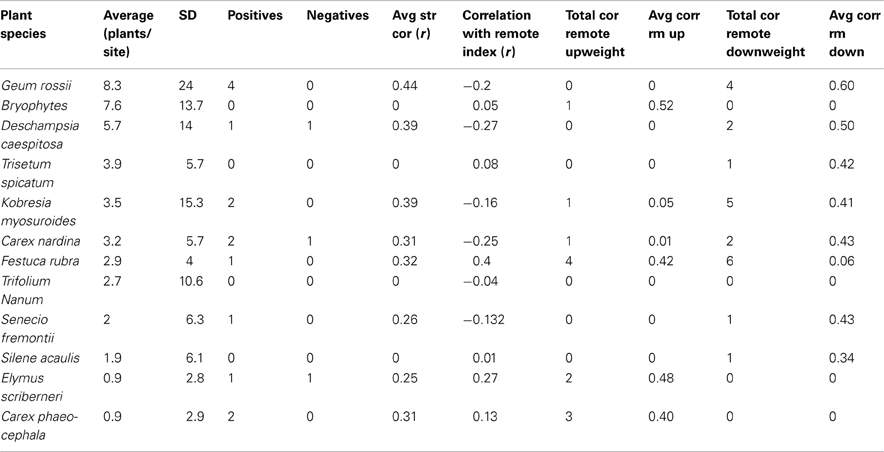Co-Occurrence Patterns of Plants and Soil Bacteria in the High-Alpine Subnival Zone Track Environmental Harshness
- 1CSIRO, Acton, ACT, Australia
- 2Department of Environmental Science, Policy and Management, University of California at Berkeley, Berkeley, CA, USA
- 3Department of Ecology and Evolutionary Biology, University of Colorado, Boulder, CO, USA
A commentary on
Co-occurrence patterns of plants and soil bacteria in the high-alpine subnival zone track environmental harshness
by King, A. J., Farrer, E. C., Suding, K. N., and Schmidt, S. K. (2012). Front. Microbio. 3:347. doi: 10.3389/fmicb.2012.00347
There is an error in the information presented in Table 2. The 11th species should not be listed and the information for the 12th and 13th species in columns 4–6 of the table was incorrectly placed on the species directly above. Table 2 is a summary table and the data miss-attributed are correctly displayed in Figure 2.
Keywords: erratum, community assembly, co-occurrence networks, niwot ridge, plant-microbe interactions
Citation: King AJ, Farrer EC, Suding KN and Schmidt SK (2013) Erratum: Cooccurrence patterns of plants and soil bacteria in the high-alpine subnival zone track environmental harshness. Front. Microbiol. 4:239. doi: 10.3389/fmicb.2013.00239
Received: 11 July 2013; Accepted: 31 July 2013;
Published online: 21 August 2013.
Edited by:
Tim Daniell, The James Hutton Institute, UKCopyright © 2013 King, Farrer, Suding and Schmidt. This is an open-access article distributed under the terms of the Creative Commons Attribution License (CC BY). The use, distribution or reproduction in other forums is permitted, provided the original author(s) or licensor are credited and that the original publication in this journal is cited, in accordance with accepted academic practice. No use, distribution or reproduction is permitted which does not comply with these terms.
*Correspondence: kin27g@csiro.au

